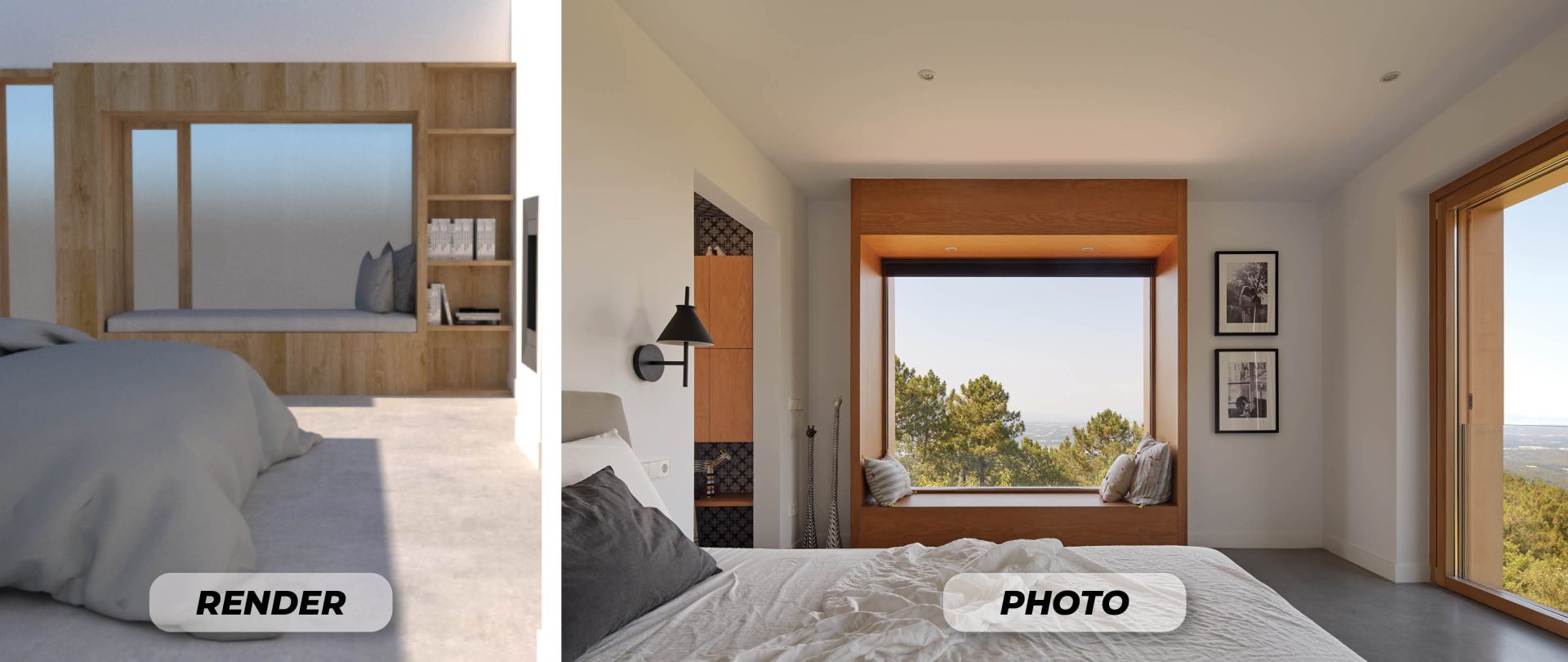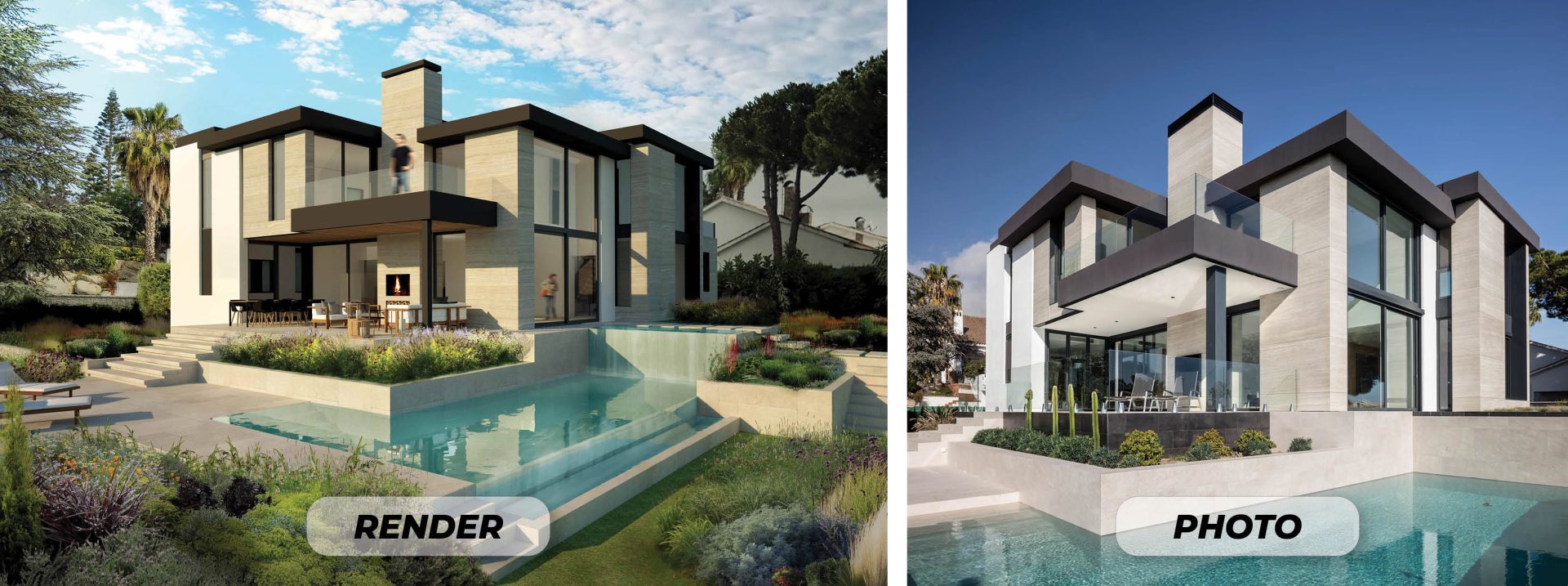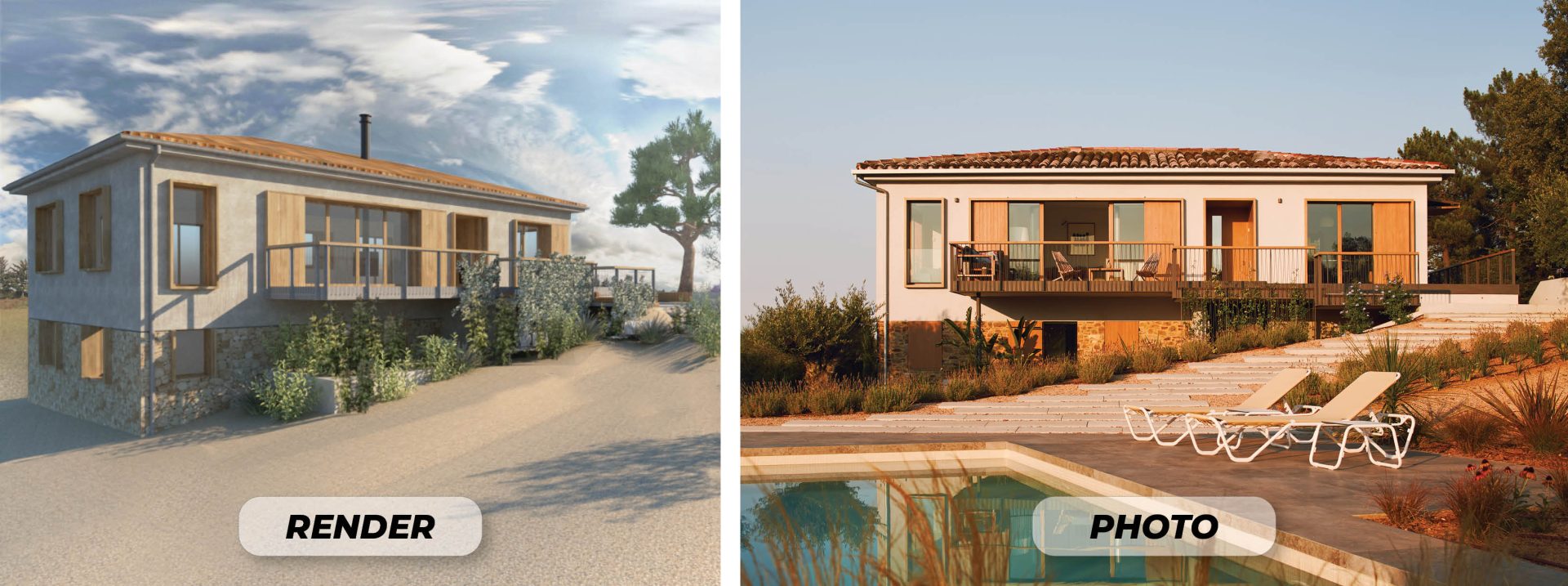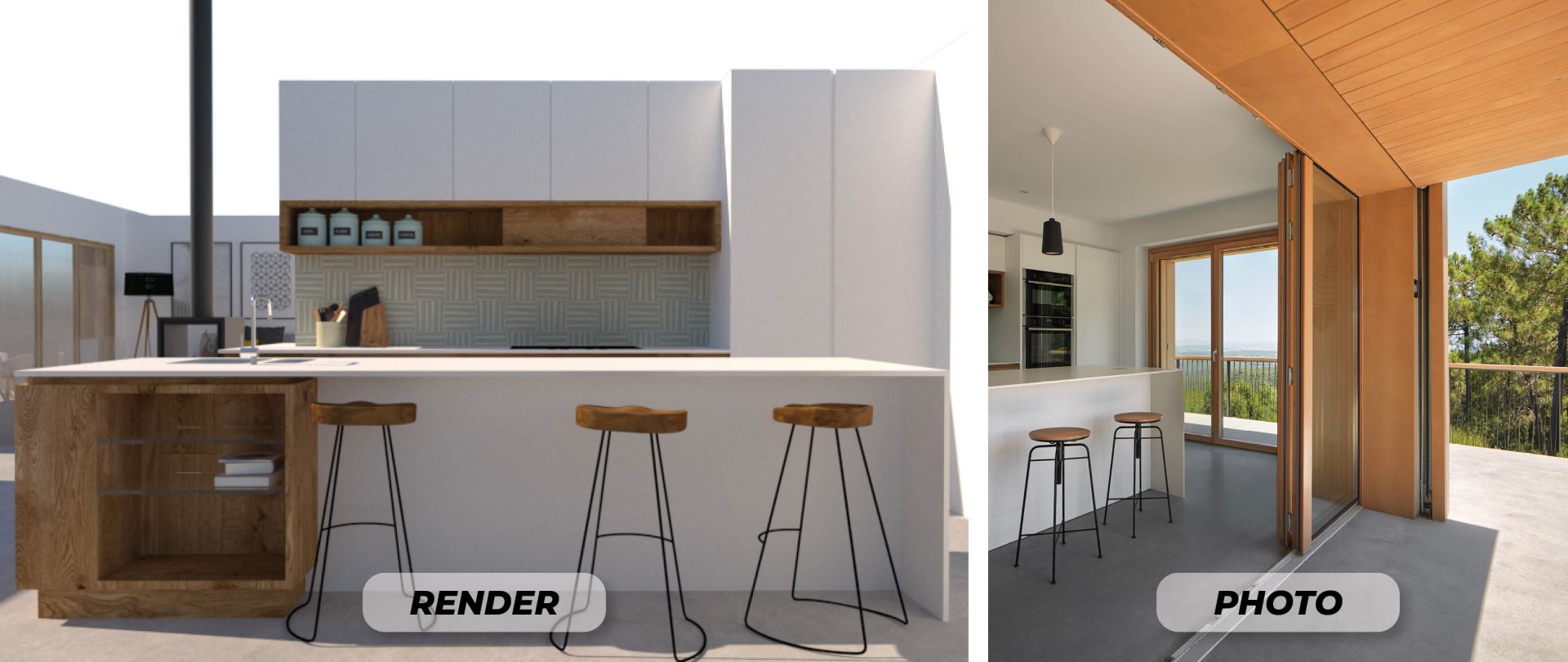ZEST Architecture, like other top architecture studios, offer realistic renderings to help clients understand what their building will look like. The question on every client’s mind, therefore, is how similar these realistic renderings will be compared to the built reality. To answer your question, at ZEST Architecture our built projects look almost exactly like the renderings, but better.
Every time we finish a project, it’s one of the remarks we get: this building looks just like the rendering. To clarify: rendering is the word for photorealistic 3D visualizations of a project that is yet to be built. In the past I had not thought much about the importance of rendering versus reality. But on a recent photo shoot of one of our projects, I got chatting to the videographer. It turns out he also does a lot of renderings and apparently different architecture firms use photo realistic visualizations in wildly different ways.


Problems with renderings
From my work for large firms in the past I know that renderings are often used to win architectural competitions. This is also why it’s really hard for small firms like us to compete against the large firms. They have about a hundred unpaid interns working day and night to create time-consuming, stylised and very spectacular visuals. We, on the other hand, have only salaried staff who have rent to pay and kids to feed. So, the game is very much rigged.

But apart from competitions, architects apparently (based on my chat with the videographer) also use renderings to create a false promise. The renderings show a building that looks amazing to win over the client. Once the architect is awarded the project, specifications and tender documentation is drawn up. This is when the design basically gets “undressed” to meet the required budget. Architizer’s article on The Deeper Dangers of Unrealistic Digital Rendering explains this dilemma of renderings versus built reality.


Why our built work looks just like the renderings
Renderings can, however, be immensely helpful, depending on how they are done. Super stylised renderings often lead to misconceptions about how the building will look like. However, realistic renders that are as truthful as possible help you understand the appearance of your project better. At ZEST Architecture, our process is straightforward. In the start of the process, I like to keep things open. When clients come to ZEST with ten Pinterest boards full of ideas for their project, I tell them to pair it down. I ask them to show us the 10 most important images. And while we are in feasibility phase, exploring what’s possible on the location and within the client’s budget, we work with hand sketches and schematic plans. This is done in order to keep the creative juices flowing and not tie us down to exact visuals just yet. Let’s keep dreaming, so to speak.

So, when does the rendering come in? The rendering comes in much later, when the design is becoming refined and detailed. That’s when we create visuals which help the client understand exactly what their project will look like. Small changes can still be made in case there’s something they’re not happy with. And this is why what’s in the rendering will be built, and invariably the finished building looks pretty much exactly like the rendering, but better.

Rendering credits: ZEST Architecture
Photo credits: Pol Viladoms & Adrià Goula
Click here to check out some photos of one of our award-winning finished projects that looks just like the render!

